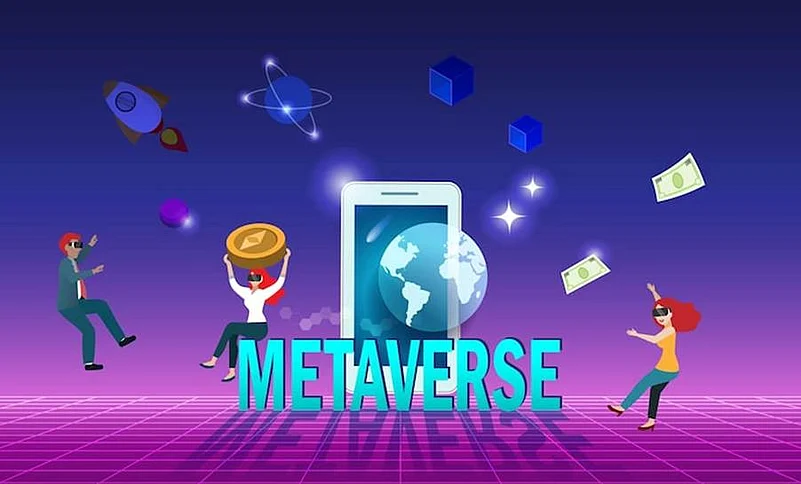The P2E and C2E models are leading a new digital economy in how people interact with virtual worlds. As blockchain-based ecosystems continue to gain more adoption, metaverse participation, crypto incentivization, and digital ownership are fast becoming some of the key terminologies in this first wave of Web3 adoption. Such models will empower users to earn, create, and build value inside the metaverse platforms in addition to consuming experiences. More importantly, understanding how such reward structures attract and retain metaverse participants provides insight into the ways in which digital labor, creativity, and virtual economies are evolving.
Foundational Understanding: What is the P2E and C2E Model?
Play-to-Earn: A Gamified Earning Economy
P2E gaming rewards participants for taking part in gaming activities virtually with cryptocurrency or tradable digital assets. Blockchain-based systems turn in-game activities into quantifiable rewards that bear real-world value.
Core aspects of P2E:
Token Rewards: Users get in-game tokens on completion of tasks, winning battles, or completing game levels.
NFT Assets: Characters, skins, weapons, and land parcels can be unique and tradable.
Open Marketplaces: Players can sell or trade the rewards they have garnered on decentralized exchanges and/or NFT markets.
Skill-Based Value: Rewards usually come based on strategy or gameplay; therefore, earning opportunities are fair.
In essence, P2E is turning gaming from a cost-based activity to a potential stream of revenues.
Creator-to-Earn (C2E): A Marketplace for Digital Employment
Unlike P2E, C2E gives users full creative freedom over building, designing, and selling virtual experiences. This is a model that organizes the metaverse like a decentralized gig economy.
What Creators Can Earn From:
Designing 3D assets (outfits, tools, vehicles, buildings, etc.)
Designing game environments, virtual stores, or event spaces
Experiences such as running virtual concerts or exhibitions.
Mint NFTs and receive royalties
Offering services include animation, design, scripting, architecture.
C2E transforms these ordinary users into digital entrepreneurs.
Why These Models Attract Users to the Metaverse
In this context, attraction starts with clearly offered values and unique opportunities compared to traditional web platforms.
1. The Appeal of Financial Rewards
One of the strongest attraction mechanisms is the promise of a reward in digital currency through leisure or creativity.
P2E and C2E attract users by offering:
Additional source of income
There are earning potentials that are not dependent on conventional barriers to jobs.
Casual and professional creator/gamer opportunities
Token appreciation during market growth cycles
Portfolio diversification through in-game assets
A concept that speaks to new adopters of Web3: earning by being immersed in virtual worlds.
2. Ownership via Blockchain Technology
Ownership remains as one of the most powerful psychological incentives.
Users enter into metaverses where they:
Truly own their digital assets
They can take their assets outside the platform
Have control over secondary sales
Retain ownership regardless of platform changes
This shift to user-owned from platform-owned economies empowers participants and gives them a reason to stay.
3. Flexible Participation Models
Participation is not one-size-fits-all, because the metaverse will appeal to a wide audience.
Users can choose the following roles:
Players
Authors/Creators
Traders
Event hosts
Community managers
Virtual land developers
These options make the involvement in a metaverse self-directed and personalized.
4. Community Culture and Social Recognition
People are still drawn to experiences that feel collaborative and rewarding.
P2E and C2E make use of community features including:
Co-op missions and guilds
Social hubs and creator communities
Ranking systems and leaderboards
Team-building areas
Voting rights through governance tokens
Social identity and recognition strengthen emotional commitment to the platform.
How P2E and C2E Models Retain Metaverse Participants
Once the users enter the metaverse, long-term retention will require continuous motivation, opportunities for advancement, and economic stability.
1. Sustainable Tokenomics and Balanced Rewards
Tokenomics are the backbone of retention.
Systems that maintain balanced reward structures without excessive inflation build trust.
Retention-based tokenomics include:
Tiered earning rewards
Token burning mechanisms
Skill-based earning upgrades
Dynamic reward pools
Regular updating of incentive distribution
Engagement is sustained over time when rewards are seen as fair and attainable.
2. Evolving Content Continuously
Stagnant platforms will rapidly lose users. Evolving metaverse environments will retain the users' interest.
Common retention strategies include the following:
New game features and missions
Seasonal events with limited-time collectibles
Creator contests and hackathons
Platform updates based on user suggestions
New creation tools and assets
Frequently innovating platforms have more active participants.
3. Utility of Metaverse Tokens
At its core are Metaverse Tokens, which are used for transactions within experiences, upgrades, investment, and governance by participants.
Token utility increases retention by enabling:
Purchasing assets
Crafting, upgrading, or otherwise personalising items
Passively reward staking
Participation in exclusive events.
Voting on ecosystem upgrades
The more use cases the token provides, the longer users remain bound to the ecosystem.
4. Career Growth and Competency Development
Many metaverses provide ways for participants to grow professionally.
Examples:
Players can become guild masters or strategists.
Creators can become top marketplace sellers
Community members can become moderators or event organizers
Developers can create mini-games and sell them
Influencers can organize meet-ups or online shows.
When the metaverse becomes a career ecosystem, retention naturally improves.
5. Emotional Investment and Personal Identity
Customization and creative expression deepen user attachment.
How this works:
Personalised avatars
Virtual spaces owned
Custom wearables
Permanent creation portfolios
Identity expression allows users to have a sense of belonging to that platform.
6. Interoperability and Asset Portability
As the metaverses evolve, assets will be interoperable over several platforms.
This future trend retains users by:
Rising value of assets across worlds
It allows creators to expand their audience.
Rewarding long-term participation across platforms
Interoperability makes the metaverse feel more open and less restrictive.
Comparison: Play-to-Earn vs Creator-to-Earn
Feature / Benefit | Play-to-Earn (P2E) | Creator-to-Earn (C2E) |
Primary Activity | Gameplay and tasks | Designing or building assets and experiences |
Reward Type | Tokens NFTs in-game currencies | Royalties sales tokens exposure |
Skill Requirement | Game skill strategy | Creativity design technical skills |
Revenue Predictability | Variable based on performance | Higher for successful creators |
Best For | Gamers and casual users | Artists developers architects |
More Practical Benefits of P2E and C2E
Expanded Advantages:
Democratization of income opportunities
Low entry barriers for global users
Enhanced user creativity through advanced tools
Early adopter benefits and incentives
A more engaged virtual labor force
Integration of learning-based experiences (learn-to-earn)
Higher ownership stake for everyday users
Fosters digital literacy and blockchain awareness
These models transform the metaverse from a passive environment into an active digital economy.
Challenges and Considerations for Long-Term Growth
While P2E and C2E offer strong benefits, they also face obstacles.
Key Issues:
High volatility of token prices
Risk of oversupply and dropping reward value
Some P2E models require large upfront investments
Complexity of blockchain for new users
Regulatory uncertainty around digital incomes
Dependence on user growth for economic stability
Creator saturation affecting earning potential
Addressing these challenges is crucial for long-term retention and sustainability.
Future Outlook: The Next Evolution of Participation
The metaverse is entering a phase where economic rewards, immersive technology, and AI convergence will shape user engagement.
Upcoming Enhancements That Improve Retention:
AI-driven personalized quests
Immersive VR building tools for creators
Multi-world economies and cross-platform tokens
Gamified learning experiences
Real-time collaboration in virtual workplaces
Zero-code creator tools for beginners
Micro-gig labor systems (scan, design, tag, build tasks)
The future metaverse will feel more like a digital society—with roles, economies, and experiences that mimic real-life systems while offering more flexible earning opportunities.
Conclusion
Play-to-earn and creator-to-earn models are transforming how users interact with the metaverse by combining entertainment, creativity, and decentralized earning opportunities. Their ability to attract participants stems from financial rewards, ownership freedom, and diverse participation roles. Meanwhile, retention is driven by sustainable tokenomics, evolving content, meaningful social structures, and career-like growth pathways. As the metaverse matures, these models will shape the future of digital economies, paving the way for new forms of work, creativity, and user-driven innovation in Web3.
FAQs (People Also Ask–style)
1. How do play-to-earn games bring users into the metaverse?
They attract users through financial incentives, easy onboarding, asset ownership, and the appeal of earning crypto through gameplay.
2. How does creator-to-earn help keep participants active?
C2E models allow creators to build and sell assets, earn recurring royalties, and gain recognition, which keeps them engaged long-term.
3. Are P2E and C2E sustainable?
Sustainability depends on tokenomics, user activity, economic balancing, and ongoing content innovation.
4. How do Metaverse Tokens improve user retention?
Tokens give financial value to participation, enable governance, and support a circular in-game economy that encourages users to return.
5. Can beginners earn in the metaverse?
Yes. Beginners can start with basic tasks, entry-level games, or simple creation tools before progressing into more advanced earning methods.
6. What skills do creators need for success?
Digital design skills, creativity, basic NFT knowledge, and experience with 3D tools or platform editors.
7. How do P2E and C2E influence the future of work?
They introduce decentralized, flexible earning systems that blend entertainment, creativity, entrepreneurship, and digital ownership.

























